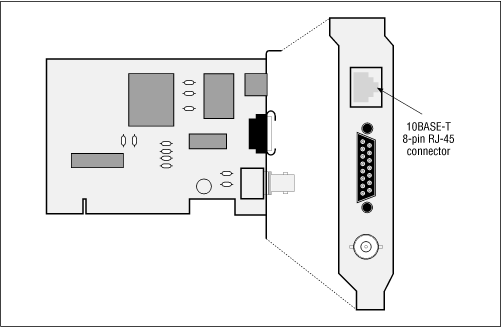Chapter 7. Twisted-Pair Media System (10BASE-T)
The 10BASE-T system was the first popular twisted-pair Ethernet system. The invention of 10BASE-T in the early 1990s led to the widespread adoption of Ethernet for desktop computers.
The 10BASE-T system is designed to support the transmission of 10 Mbps Ethernet signals over “voice-grade” Category 3 twisted-pair cables. However, the vast majority of twisted-pair cabling systems in use today are based on Category 5 twisted-pair cables. Category 5 cables have higher quality signal carrying characteristics and work very well with the 10BASE-T system.
In this chapter we discuss the signaling and media components used in the 10BASE-T system. We also provide the basic configuration guidelines for a single 10BASE-T segment.
10BASE-T Signaling Components
The following signaling components may be used in the 10BASE-T system to send and receive signals over the media system:
Ethernet interface with a built-in 10BASE-T transceiver.
AUI transceiver cable.
External 10BASE-T AUI-based transceiver, also called a medium attachment unit (MAU).
Repeater hub equipped with 10BASE-T ports.
10BASE-T Ethernet Interface
A 10BASE-T Ethernet interface typically includes a built-in 10BASE-T transceiver that is used to make a direct connection to the twisted-pair segment. Figure 7.1 shows a NIC designed for installation in a desktop computer.

Figure 7.1. 10BASE-T Ethernet ...
Get Ethernet: The Definitive Guide now with the O’Reilly learning platform.
O’Reilly members experience books, live events, courses curated by job role, and more from O’Reilly and nearly 200 top publishers.

